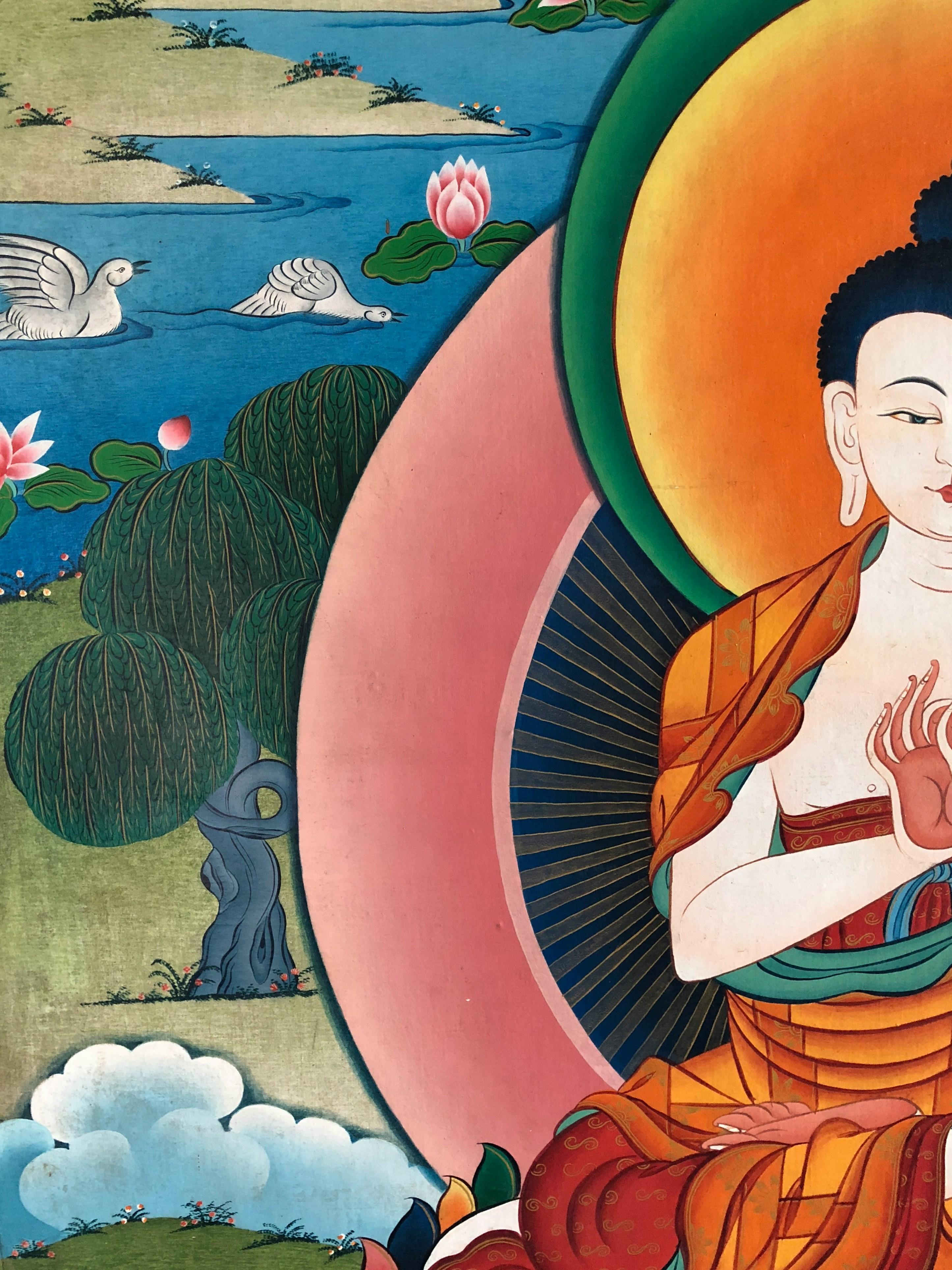India, the birthplace of Buddhism, continues to honor its spiritual legacy through vibrant and deeply meaningful celebrations. Buddhist Festivals in India are not just religious observances—they’re cultural events that blend devotion, art, community, and introspection. From serene rituals under the Bodhi Tree to masked dances in Himalayan monasteries, these festivals offer a glimpse into the soul of Buddhist tradition.
🧘 What Are Buddhist Festivals in India?
Buddhist festivals commemorate key events in the life of Gautama Buddha and the spiritual milestones of the Buddhist community. These celebrations vary across regions and schools of Buddhism—Theravāda, Mahāyāna, and Vajrayāna—each adding its own flavor of ritual, music, and symbolism.
Common Themes:
-
Commemoration of Buddha’s life events: Birth, enlightenment, first sermon, and Mahaparinirvana.
-
Community gatherings: Sangha celebrations and offerings.
-
Spiritual reflection: Meditation, chanting, and teachings.
-
Cultural expression: Dance, music, art, and food.
🌍 Major Buddhist Festivals in India
Here’s a curated list of the most popular and widely celebrated Buddhist festivals across India:
1. Buddha Purnima (Buddha Jayanti)
-
When: Full moon in April–May
-
Where: Bodh Gaya, Sarnath, Kushinagar, Delhi
-
Significance: Celebrates Buddha’s birth, enlightenment, and passing.
-
Highlights: Prayers, sermons, processions, and lighting of lamps.
2. Hemis Festival
-
When: June–July
-
Where: Hemis Monastery, Ladakh
-
Significance: Honors Guru Padmasambhava, founder of Tibetan Buddhism.
-
Highlights: Masked dances (Cham), music, and vibrant costumes.
3. Losar Festival (Tibetan New Year)
-
When: February–March
-
Where: Dharamshala, Tawang, Sikkim, Ladakh
-
Significance: Marks the Tibetan lunar new year.
-
Highlights: Rituals, family gatherings, traditional food, and cultural performances.
4. Asalha Puja (Dharma Day)
-
When: July (Full moon)
-
Where: Sarnath and Theravāda centers
-
Significance: Commemorates Buddha’s first sermon at Sarnath.
-
Highlights: Dhamma talks, meditation, and offerings to monks.
5. Magha Puja (Sangha Day)
-
When: February (Full moon)
-
Where: Theravāda temples in India and Southeast Asia
-
Significance: Celebrates the spontaneous gathering of 1,250 enlightened monks.
-
Highlights: Candlelight processions, chanting, and merit-making.
6. Ullambana Festival
-
When: August–September
-
Where: Mahāyāna centers, especially in Northeast India
-
Significance: Honors ancestors and departed souls.
-
Highlights: Offerings, rituals, and community feasts.
7. Kathina Ceremony
-
When: October–November
-
Where: Theravāda monasteries
-
Significance: Marks the end of the monastic retreat (Vassa).
-
Highlights: Robe offerings, alms giving, and gratitude rituals.
8. Rumtek Chaam
-
When: December
-
Where: Rumtek Monastery, Sikkim
-
Significance: Celebrates the victory of good over evil.
-
Highlights: Cham dances, spiritual teachings, and community gatherings.
Sources: Travelogy India, Leverage Edu, Tusk Travel
🧳 What’s Included in Buddhist Festival Travel Packages?
Most packages include:
-
Accommodation: Monastery guesthouses, eco-resorts, or boutique hotels.
-
Transport: Airport transfers, intercity travel, and festival access.
-
Guided tours: Spiritual guides, historians, and cultural experts.
-
Meals: Often vegetarian and aligned with local customs.
-
Ritual access: Meditation sessions, prayer ceremonies, and cultural performances.
Some packages also offer wellness add-ons like yoga, Ayurveda, and mindfulness workshops.
🗓️ Best Time to Experience Buddhist Festivals
-
Spring (March–May): Buddha Purnima and Losar.
-
Summer (June–August): Hemis Festival and Asalha Puja.
-
Autumn (Sept–Nov): Ullambana and Kathina.
-
Winter (Dec–Feb): Rumtek Chaam and Magha Puja.
Each season brings a unique spiritual and cultural flavor.
💡 Types of Buddhist Festival Experiences
| Experience Type | Ideal For | Duration | Key Features |
| Pilgrimage Circuits | Devotees | 5–10 days | Temple visits, rituals, spiritual guides |
| Cultural Journeys | Explorers | 3–6 days | Dance, music, food, and local customs |
| Monastery Retreats | Mindful travelers | 4–7 days | Meditation, chanting, silence |
| Festival Photography | Creators | 5–10 days | Monastic life, costumes, performances |
| Interfaith Trails | Curious learners | 4–6 days | Multi-faith sites and cultural exchange |
🧘 Wellness and Mindfulness Add-ons
Many Buddhist festivals are deeply meditative and healing:
-
Silent retreats during festival periods
-
Forest walks and nature immersion
-
Teachings from monks and scholars
-
Group meditation and chanting sessions
Perfect for travelers seeking peace, healing, and introspection.
🛍️ What to Buy and Experience
-
Souvenirs: Prayer flags, thangkas, incense, Buddhist texts.
-
Cuisine: Tibetan momos, thukpa, satvik meals.
-
Rituals: Lighting butter lamps, turning prayer wheels, offering alms.
Markets in Bodh Gaya, Leh, and Dharamshala offer authentic finds.
🛡️ Travel Tips for Buddhist Festivals in India
-
Dress modestly, especially in monasteries and sacred sites.
-
Respect local customs and rituals.
-
Stay hydrated and carry essentials like ID, cash, and comfortable footwear.
-
Book with trusted operators for smooth logistics and safety.
✈️ How to Book Buddhist Festival Packages
Booking is simple:
-
Online platforms: Yatra, MakeMyTrip, Thrillophilia.
-
Specialist operators: Buddhist Circuit Tours, India Pilgrimage, Spiritual India.
-
Tourism boards: Government-approved packages under Swadesh Darshan and PRASAD schemes.
Look for seasonal offers, group discounts, and festival-based itineraries.
Final Thoughts
Buddhist Festivals in India are more than events—they’re invitations to pause, reflect, and celebrate the timeless teachings of compassion, mindfulness, and inner peace. Whether you're watching a masked dance in Ladakh or meditating under the Bodhi Tree, these experiences leave a lasting imprint on the soul.
Ready to celebrate the path of peace? Choose your festival, pack your intention, and let India’s spiritual rhythm guide you.



